Key takeaways
- Involving kids in cooking fosters creativity and boosts their confidence as they make choices and learn new skills.
- Cooking together enhances children’s math and reading abilities through practical application, making learning fun and engaging.
- Creating a safe, organized kitchen environment encourages independence and allows children to feel ownership of their cooking experience.
- Encouraging kids to take on tasks themselves promotes their confidence and allows them to learn from trial and error.
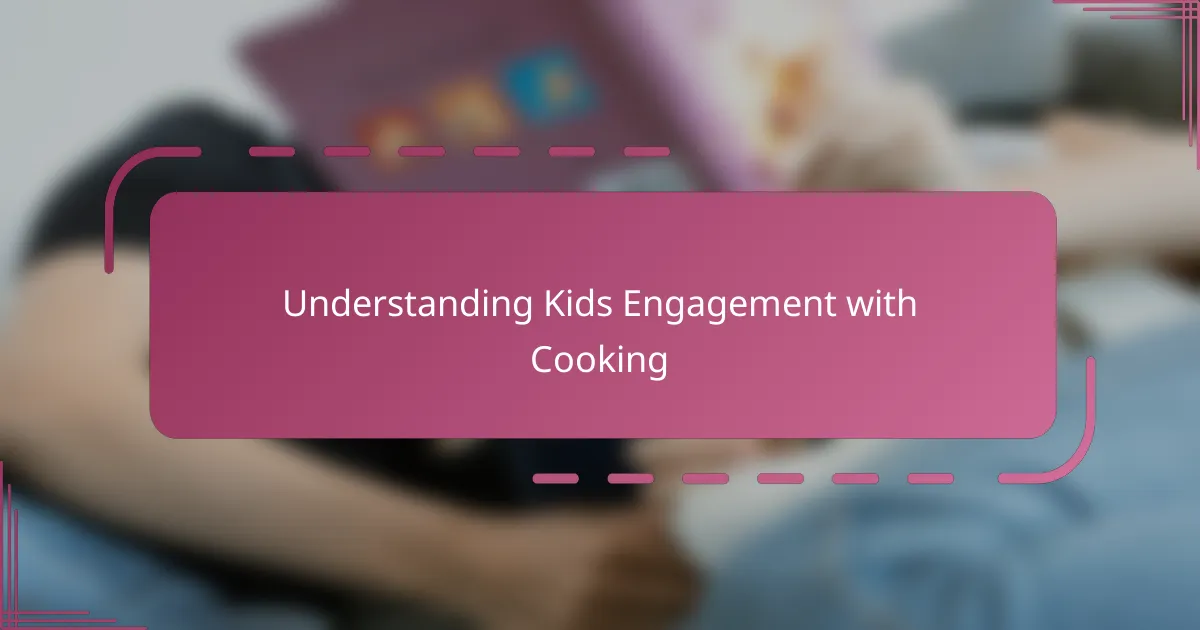
Understanding Kids Engagement with Cooking
When I first introduced cooking to my kids, I realized that their engagement depended a lot on how involved they felt. It wasn’t just about handing them a spoon but letting them make choices—what ingredients to use or how to mix things up. Have you ever noticed how a child’s eyes light up when they realize their input matters? That moment is pure magic.
Kids connect with cooking not merely as a task but as a creative adventure. I found that when they understand the “why” behind each step, their curiosity kicks in naturally. For instance, explaining why we whisk eggs gently or how spices change the flavor made them eager to learn and experiment.
What keeps kids engaged over time? For me, it was noticing how sense of accomplishment grows with each successfully prepared dish. Cooking became less about the mess and more about the pride, and I could see their confidence bubbling alongside the sauce. It made me ask myself—how often do we offer opportunities for them to feel this empowered?
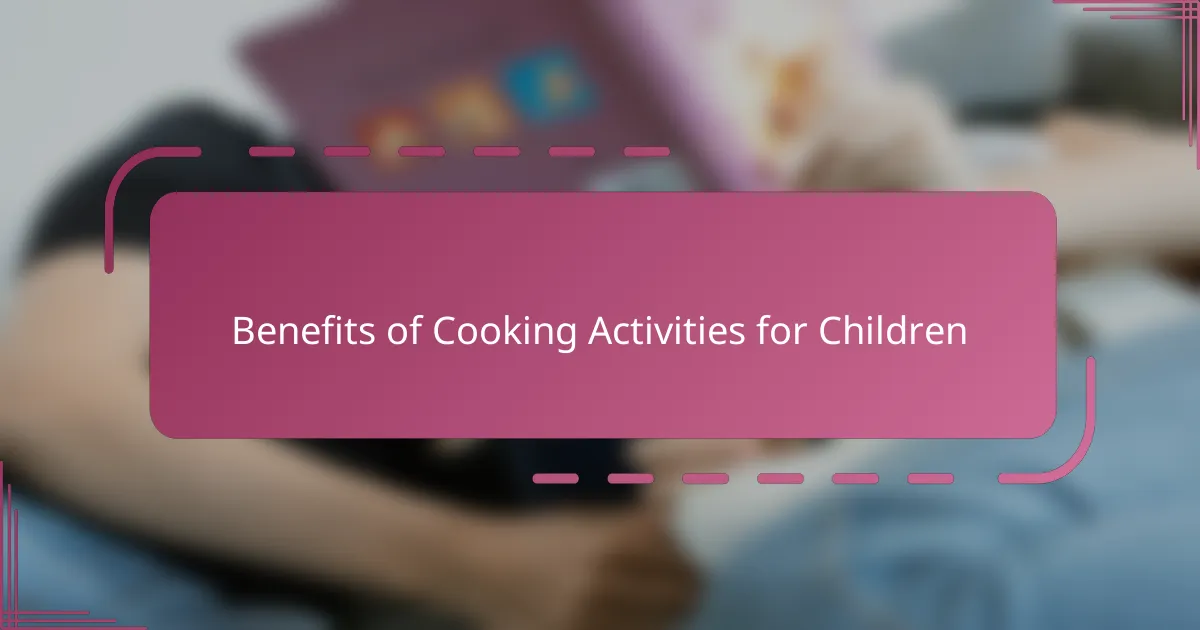
Benefits of Cooking Activities for Children
Cooking with my kids has shown me firsthand how it boosts their confidence. When they master even a simple skill, like cracking an egg without shell bits, their eyes shine with pride. Isn’t it amazing how a small achievement in the kitchen can empower them in other areas of life?
I’ve noticed that cooking also sharpens their math and reading skills naturally. Following a recipe means measuring ingredients and reading instructions, which turns learning into an enjoyable challenge. Have you ever caught your child eagerly asking, “How many cups do I need?” or “What does ‘simmer’ mean?” Those moments make education feel like play.
Beyond the practical skills, cooking becomes a way for us to connect and communicate. Sharing stories while stirring a pot creates memories that last longer than the food itself. There’s something deeply fulfilling about seeing their faces light up not just from tasting a dish, but from feeling loved and included.
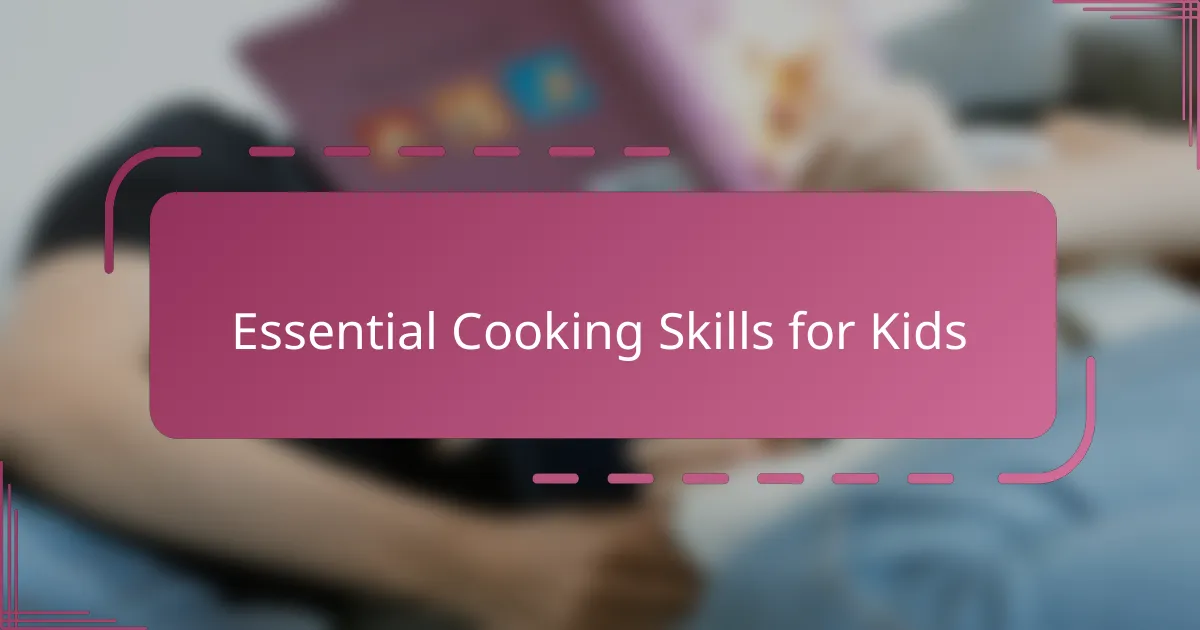
Essential Cooking Skills for Kids
One of the first cooking skills I taught my kids was how to safely use a knife. At first, it was nerve-wracking, but showing them how to hold the knife properly and cut soft fruits gave them a real sense of independence. Have you ever seen a child’s confidence soar after mastering something they thought was scary?
Measuring ingredients is another skill that transformed our kitchen time. Watching them learn to level off a tablespoon or pour carefully into a measuring cup reminded me how these small moments build patience and precision. It’s fascinating how math sneaks into cooking in a way that feels less like homework and more like play.
Finally, I made sure to focus on mixing and stirring techniques. Simple as it sounds, learning to whisk without splashing or fold batter gently became a joyful challenge. I remember one afternoon when my youngest proudly said, “Look, Mom! I didn’t spill any!”—that little victory made me realize how essential these basic skills are for boosting their confidence and enthusiasm.
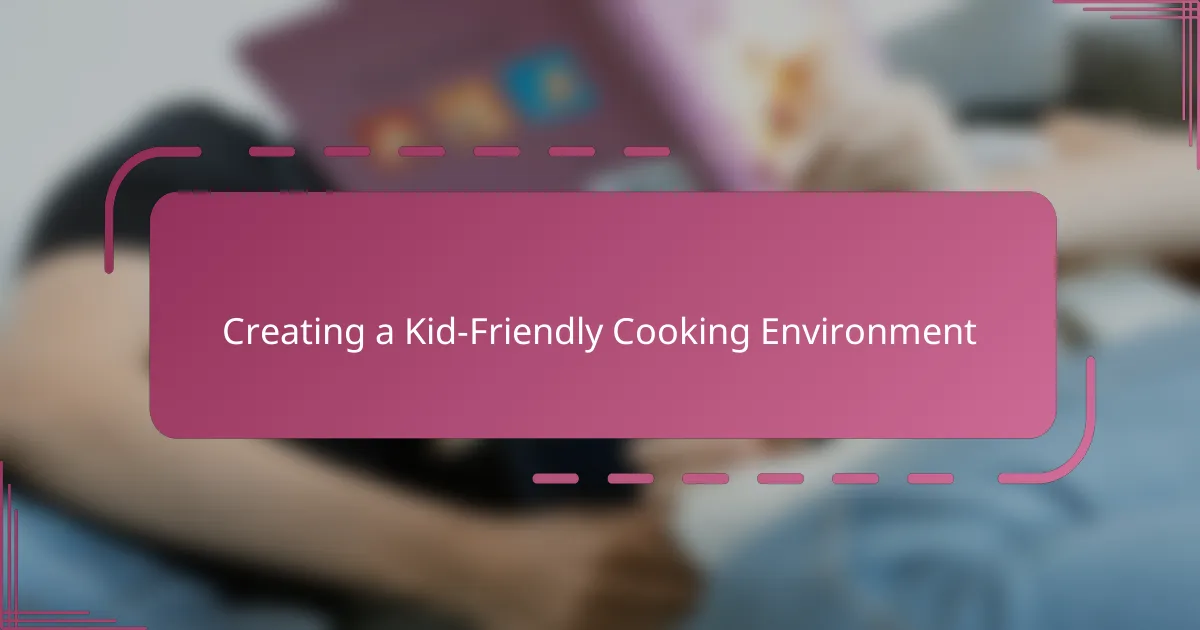
Creating a Kid-Friendly Cooking Environment
Creating a kitchen space where my kids feel safe and excited to cook was a game-changer. I made sure to set up a low counter spot just for them, so they weren’t stretching or struggling to reach. Have you noticed how much more involved they get when they have a designated “kid zone” that feels like their own little command center?
I also focused on organizing tools and ingredients within their easy reach—colorful bowls, kid-friendly utensils, and clearly labeled containers. It might sound simple, but giving them these small freedoms sparked their independence and eagerness to dive into cooking without constant help. I remember my daughter beaming after pulling out the measuring spoons all by herself—it was a proud moment for both of us.
Safety was another big piece of the puzzle. I replaced sharp knives with child-safe options and talked openly about kitchen rules, turning caution into a shared responsibility rather than a list of no’s. This approach helped build trust, and it felt like we became teammates rather than me just being the boss of the kitchen. What if kids felt this sense of ownership every time they stepped into the kitchen? That’s what I aimed for—and it truly changed our cooking time.

Fun and Easy Recipes for Kids
One of my favorite go-to recipes for the kids is fruit kabobs. It’s simple, colorful, and they get to practice their fine motor skills by threading pieces of fruit onto the skewers. Have you ever watched a child’s face light up as they create their own edible rainbow? That moment of pride is priceless.
Another easy hit in our kitchen is homemade pizza pockets. I let my kids choose toppings and fold the dough themselves—it’s like a mini cooking adventure wrapped in a tasty treat. I noticed how eagerly they dove into this activity, especially when they realized they could customize their own meal. Isn’t that sense of creativity what keeps them coming back?
For something sweet but still simple, we try no-bake energy bites. Mixing ingredients in a bowl feels like a messy science experiment, and the reward is instant. Have you ever seen how excited kids get tasting their own “inventions”? Those little bites of success can turn even the pickiest eaters into proud chefs.

Encouraging Independence in the Kitchen
Encouraging my kids to take the lead in the kitchen was an eye-opener. I realized that when I step back and let them tackle tasks on their own—even things as simple as cracking eggs or stirring batter—their confidence grows immensely. Have you noticed how empowering it is for children to realize, “I did this all by myself”?
I also learned the importance of trusting them with responsibility. Giving my kids chances to plan a snack or decide on the seasoning made them feel like real chefs, not just helpers. That sense of ownership turned our cooking sessions into something they looked forward to, rather than a chore.
Sometimes, I remind myself to resist the urge to jump in and fix their mistakes immediately. As nerve-wracking as it can be to watch flour end up everywhere or a dish not turn out perfect, those moments are where their independence truly blooms. What if we allowed more room for trial and error—wouldn’t that make them stronger and more curious cooks?
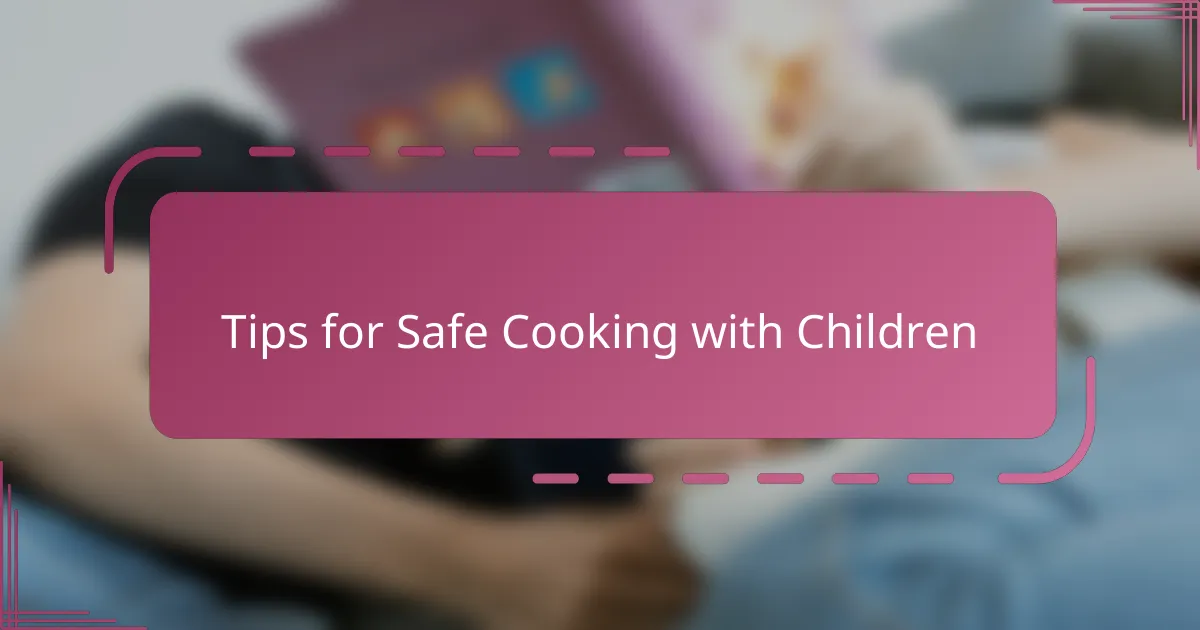
Tips for Safe Cooking with Children
Safety always has to come first in the kitchen, especially with little hands involved. I made it a point to teach my kids simple rules early on—like washing hands before cooking and never touching hot surfaces. Those moments felt like little trust-building exercises, reminding me that protecting them while giving freedom is a delicate balance.
One trick that worked well for us was swapping sharp knives for child-friendly ones. Honestly, I was skeptical at first, worried they wouldn’t cut well, but seeing my kids carefully slice soft veggies boosted their confidence and eased my worries. Have you ever noticed how a safer tool can transform a scary task into an exciting challenge?
I also kept a close eye on where I placed hot pots and knives, creating clear “no-go zones” that felt like our invisible kitchen boundaries. Talking openly about why these areas are off-limits really helped my kids understand safety as teamwork, not just a list of don’ts. Don’t you think involving children in setting rules makes them more eager to follow them? It certainly made a difference in my home.


